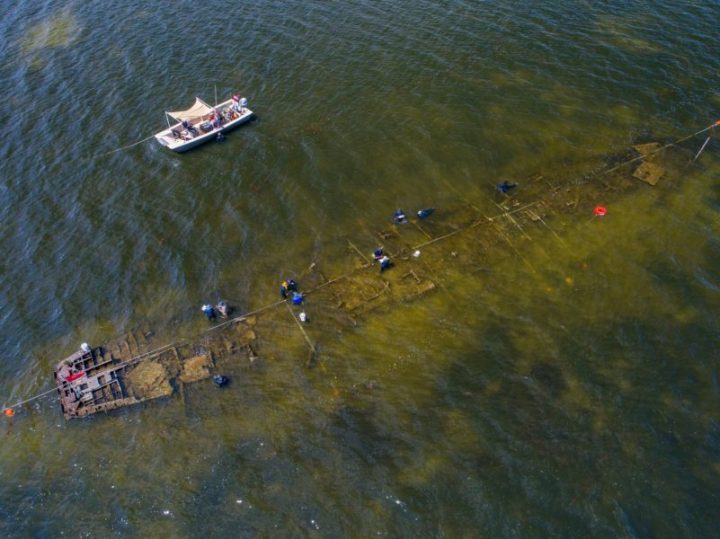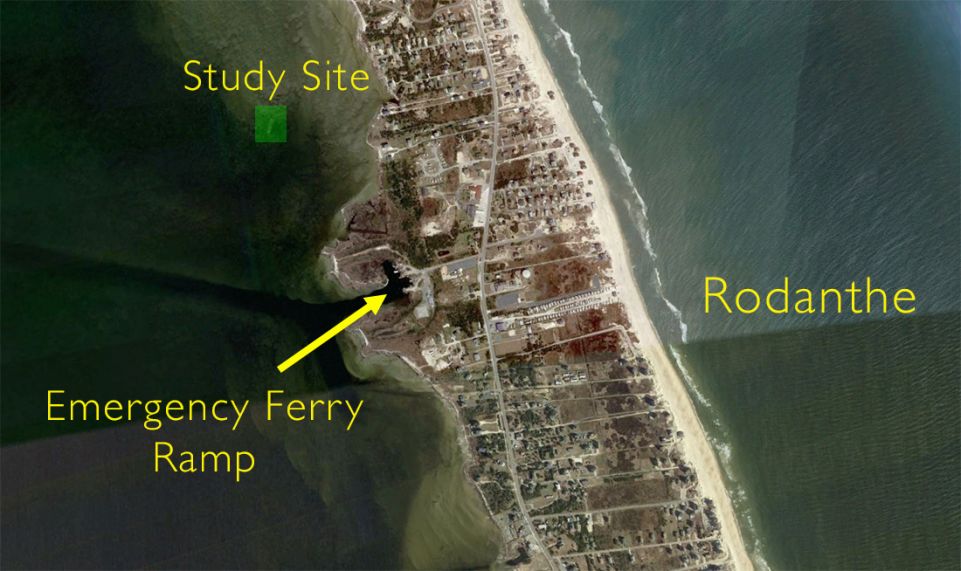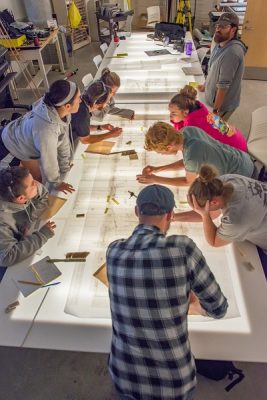
From a Coastal Studies Institute announcement and reprinted from the Outer Banks Voice
RODANTHE – A team of East Carolina University graduate students led by Nathan Richards, head of the University of North Carolina Coastal Studies Institute’s Maritime Heritage Program, has identified the Pappy’s Lane shipwreck in the Pamlico Sound near Rodanthe as a type of World War II troop transport.
Supporter Spotlight

The shipwreck was determined eligible in 2016 for the National Register of Historic Places for its information potential through consultations between the North Carolina Department of Transportation’s Archaeology Group and the State Historic Preservation Office.
Directly in the path of the planned Bonner Bridge extension project, the shipwreck, nicknamed after a small road in Rodanthe, remained a mystery for years, with local oral history suggesting it was a gravel barge that ran aground in the 1960s. Because the vessel is eligible for inclusion in the National Register of Historic Places, the National Historic Preservation Act of 1966 requires an archaeological investigation before the planned construction project proceeds. Also, researchers believe that the site has separate historical, archaeological, interpretative and educational significance, including the opportunity for ECU graduate students to train in archaeological techniques and historical research.
While evidence supports a connection between its loss and the construction of roads on the Outer Banks in the 1960s, archaeological details suggest a very different original function.

With the support of the North Carolina Department of Transportation, Richards, an associate professor with the Program in Maritime Studies at ECU, worked with nine graduate students in a month-long field school at the Wanchese-based institute to assess the site’s historical significance prior to construction of the bridge.
“We began the field school armed with a significant amount of historical information about late nineteenth and early twentieth century ship types,” said Richards, who has been investigating the shipwreck since 2010.
Supporter Spotlight
“We soon realized that the ship had a welded steel hull, and what we thought were rivets was some other diagnostic trait,” said Richards. “Towards the end of the third week of field work, the evidence that the Pappy’s Lane Wreck was actually a military vessel became increasingly clear.”
Due to the lack of historical leads, archaeological recording was the driving force of discovery on the project. Richards and the graduate students spent nearly every day in September, weather permitting, on the site of the shipwreck recording the wreck and producing a map far more detailed than any before it.
The North Carolina Department of Natural and Cultural Resources Underwater Archaeology Branch, which issued one of the permits for the project, recommended limited archaeological excavation of the stern and three cross-sections, allowing the team to determine the shape of the hull and other details about the vessel’s construction.
It was the first project that Richards had dredged in 10 years. Dredging reveals more of the wreck, but also exposes it to oxygen and other conditions that can result in degradation. That’s why dredging is used only on a limited basis.
After mapping the site and dredging targeted areas, Richards and his students were able to match the stern and other details to two related classes of World War II gunboats, Landing Craft Infantry, or LCI, and Landing Craft Support, or LCS, vessels.

These watercraft, each built to the same blueprints but with some modifications, were introduced late into the Pacific Theater of World War II. Designed for amphibious warfare, they were used to land and support troops on enemy beaches. With crews of 71 men, LCIs and LCSs supported landings in the Philippines, Borneo, Iwo Jima and Okinawa.
These ships’ stories did not end when the war did. While most LCIs and LCSs were either scrapped or stayed in the Pacific for minesweeping and other duties, many were transferred to foreign fleets, such as France, Vietnam and Japan, to rebuild allied militaries destroyed in the war.
They served less than two years for the United States during World War II but some spent more than two decades in the South Vietnamese Navy, serving as its first real warships.
By the 1980s, most were sold, scrapped or converted to commercial fishing boats, leaving a single surviving LCS in the Thai navy, which ultimately returned to the United States as a floating museum in 2007.
Further research is needed to identity the specific type, name and individual story of the Pappy’s Lane shipwreck. The time between its possible tenure in the Pacific Ocean and its life as an unassuming shipwreck in the Pamlico Sound spans decades, leaving much to uncover.
“We did not expect to find an American amphibious assault vessel lying in Pamlico Sound, so our research is continuing,” said Richards.
“We certainly appreciate the assistance of North Carolina’s Department of Transportation and Department of Natural and Cultural Resources to fully explore the historical and archaeological significance of the wreck, and hope to shed more light on the vessel by the end of the year,” Richards said.







